Kondakadalai kuzhambu for rice! A lip-smacking south Indian chickpeas gravy or curry with freshly ground spices. Learn how to make this kadala kuzhambu with detailed step-wise pictures.
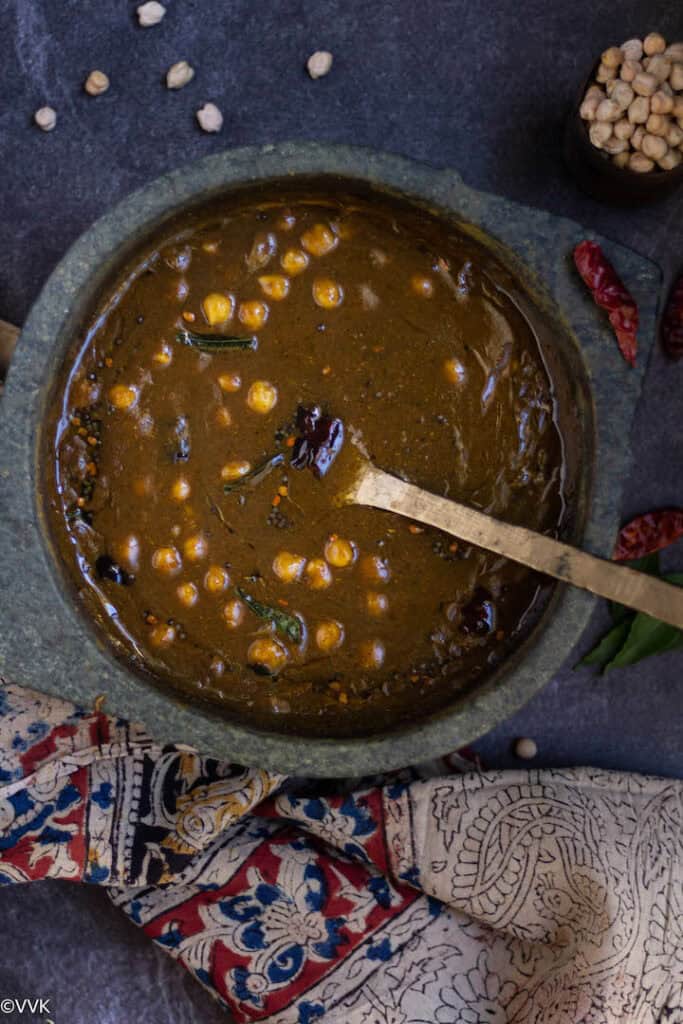
You all know my love for kuzhambu recipes. I have explained it on every single kuzhambu recipe of mine. :-) Kuzhambu, call it as curry or gravy, or stew, is a tamarind-based dish that forms an integral part of the Tamil kitchen. And this kuzhambu recipe is one such dish.
Jump to:
Background
Before getting into the recipe details, I want to share how we (my MIL and I) learned this recipe. While searching for rare and forgotten South Indian veg recipes (a particular one, I am planning to share soon, so let me keep it a secret), I came across this kondakadalai kuzhambu recipe at Shantha paati samayal YT channel.
It’s an interesting kuzhambu recipe, and it reminded me of the milagu kuzhambu a lot. It looks like it’s a popular recipe around Kumbakonam and Tanjavur area. Both my MIL and I were watching, and we decided to give it a try. We used our homemade rasam podi and also adjusted the spices measure. It came out so well, and we all liked it. More than us, kiddo loved it, and it became a regular staple in our household.
Kadala kuzhambu
Kadalai here means the white chickpeas or the garbanzo beans. It is popularly known as the kondakadalai kuzhambu or kadala kuzhambu.
While there are different versions of this kuzhambu, this particular one is without onion and garlic. Like the original recipe, we also made this in a soapstone vessel or the kalchatti. You can make it in any heavy bottom vessel or saucepan, or Dutch oven too.
My MIL’s touch.
It’s my MIL who first made this recipe; I followed her version and style blindly. While my mom dry-roast the spices without oil, my MIL always roasts the spices with little oil and adds a few mustard seeds along with other ingredients. For this recipe, I have included ¼ tsp of mustard seeds. Trust me; you won’t find the flavor of mustard seeds overpowering, do give it a try.
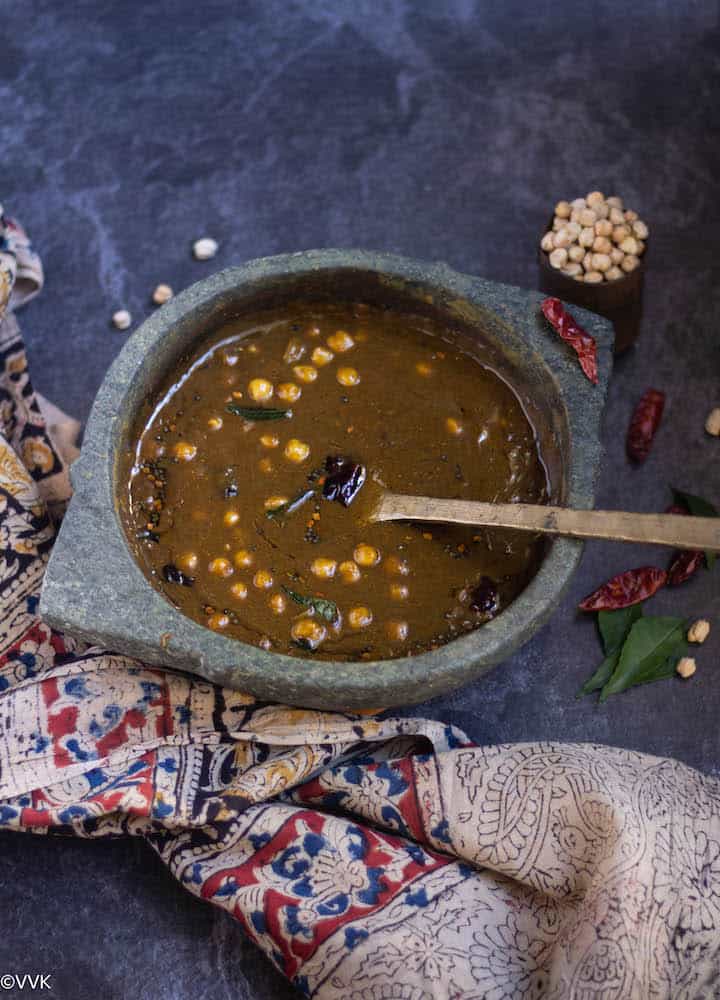
She mixes all the dry spice powders with water and simmers them first. Not only for this kuzhambu recipe, but she also follows the same procedure for other kuzhambu and rasam recipes. And she adds the tempering in the end. (I mostly start with tempering :-))
Dietary specifications.
By nature, this kuzhambu is vegan, nut-free, and dairy-free. You can skip the asafoetida or use gluten-free asafoetida to make it gluten-free as well.
How to serve kondakadalai kuzhambu
It goes well with rice. Just mix it with hot rice with a dollop of gingelly oil or ghee and relish it with any dry curry or with applam/papad. As this kuzhambu is slightly on the spicier side, I recommend mild stir-fry/poriyal like cabbage poriyal, beans poriyal, or carrot poriyal. You can also serve this with kootu.
I have stored this kuzhambu for two days in the refrigerator but not beyond that. We love it so much that we finish it off on the first day.
Now without any further ado, here is the detailed kadalai kuzhambu recipe with step-wise pictures.
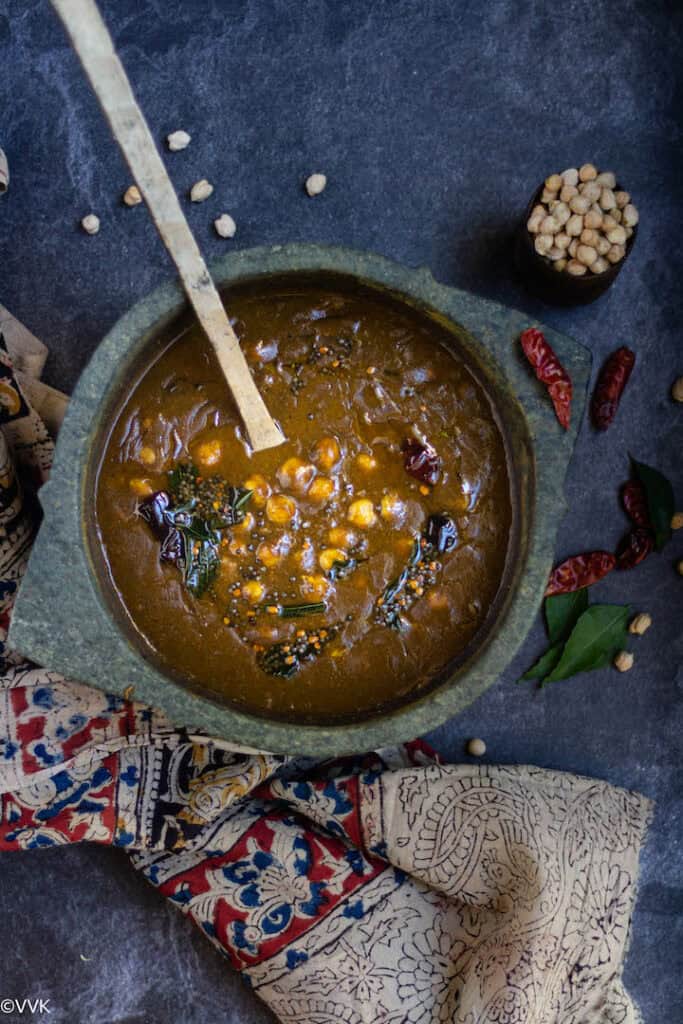
How to make kondakadalai kuzhambu – South Indian Style Chickpeas gravy
Soak and cook the chickpeas.
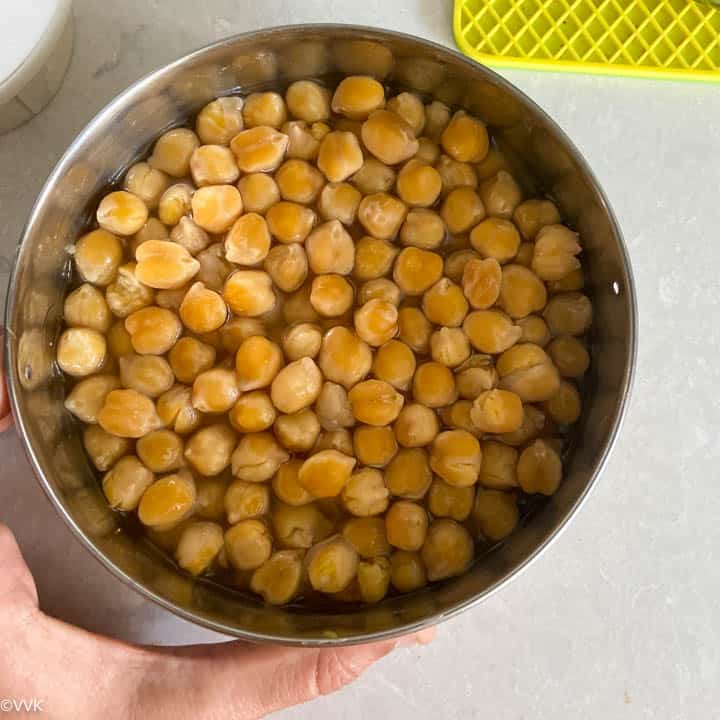
- Rinse and soak the chickpeas overnight or atleast for 6 hours. Then drain the water and add 1.5 cups of freshwater, and pressure cook for three whistles. If using Instant Pot, pressure cook the beans for 18 to 20 minutes. Drain the water and set it aside.
Prepare the spice powder.
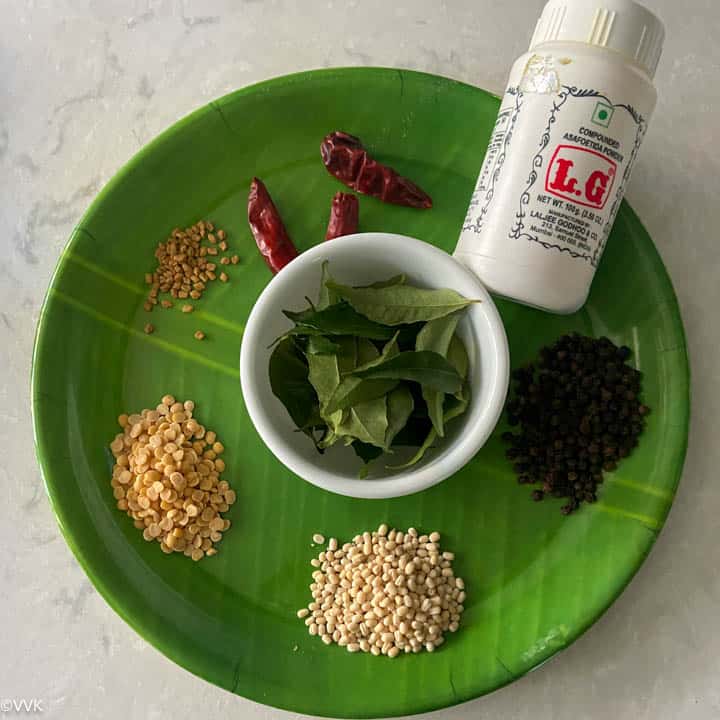
- In a small pan or kadai, heat gingelly oil, and when it is hot, add the mustard seeds, toor dal, urad dal, black pepper, fenugreek seeds, asafoetida, and dried red chilies. Roast until the toor dal turns light brown. Now add the curry leaves and turn off the heat. The curry leaves will crisp up in the residual heat.
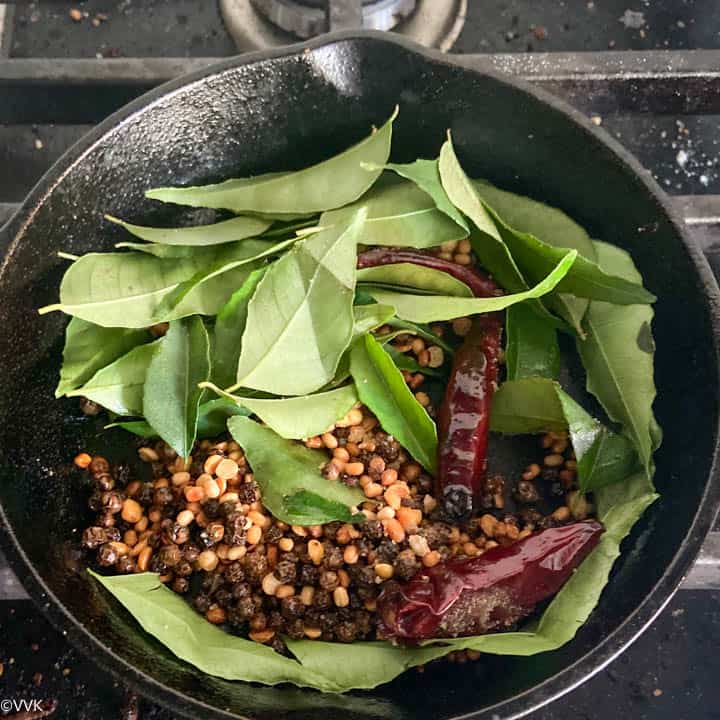
- Let it cool and grind it into a smooth paste by adding ½ cup of water.
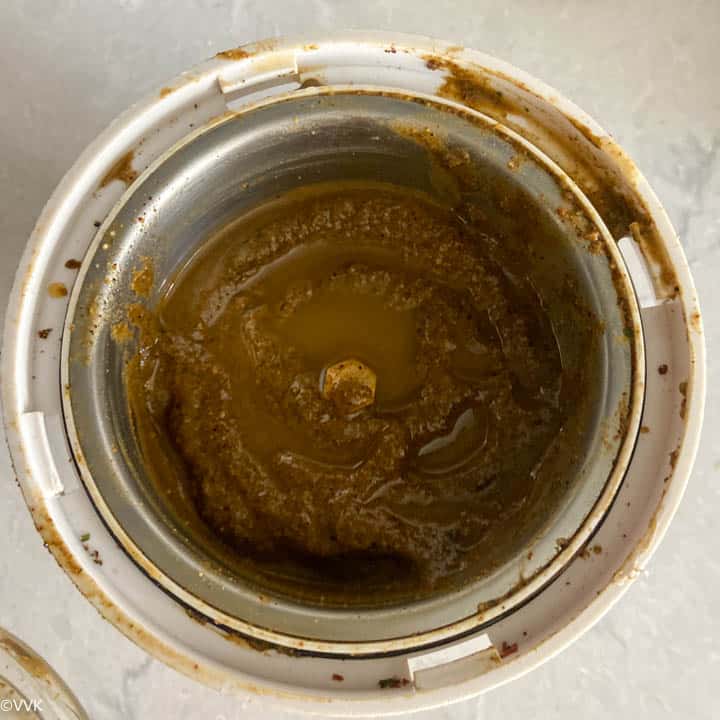
Prepare the kuzhambu
- Add the rasam podi, tamarind paste, turmeric powder, and salt in a saucepan or kadai in which you are going to make the kuzhambu. I used my soapstone vessel for making this, so I added the spices in that.
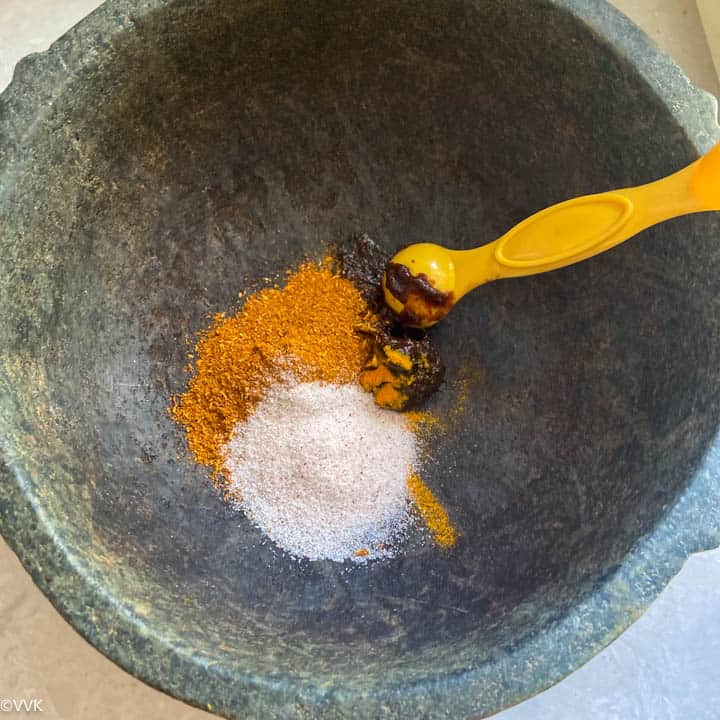
- Now add 1 cup of water and mix them. And bring this mixture to a boil.
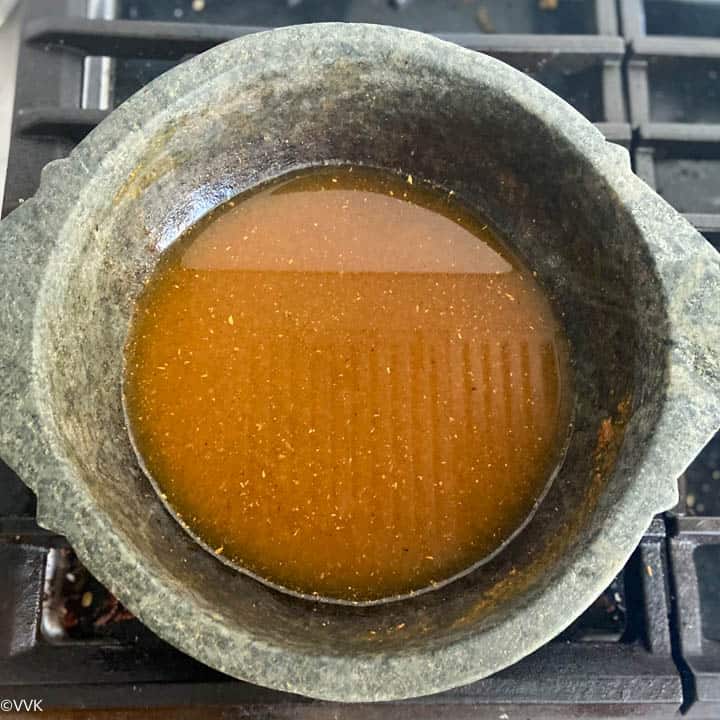
- Once the rasam podi and tamarind paste’s raw smell is gone, add the chickpeas and cook for two minutes.
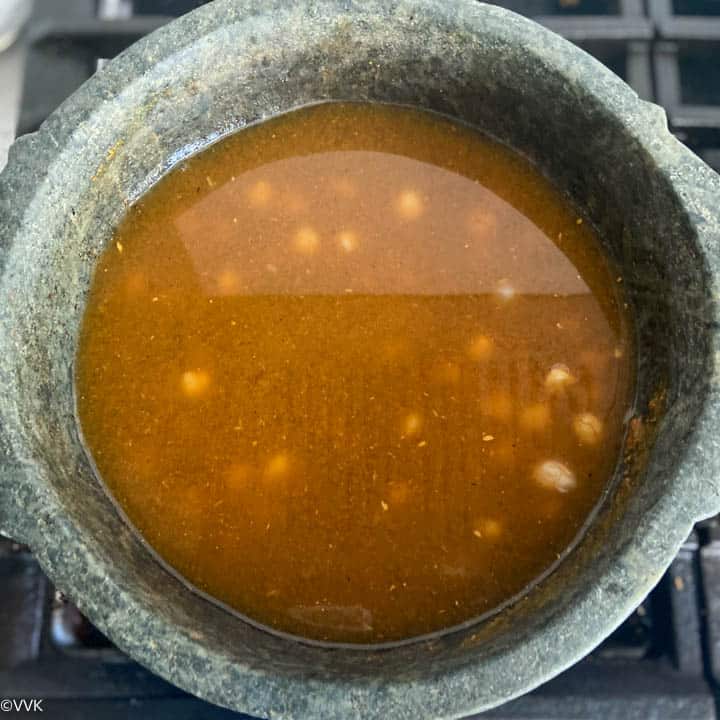
- Now add the ground paste to the kuzhambu and rinse the mixer jar with ½ cup of water and add that. If needed, add half more cups of water. Simmer the gravy for about 7 to 10 minutes.
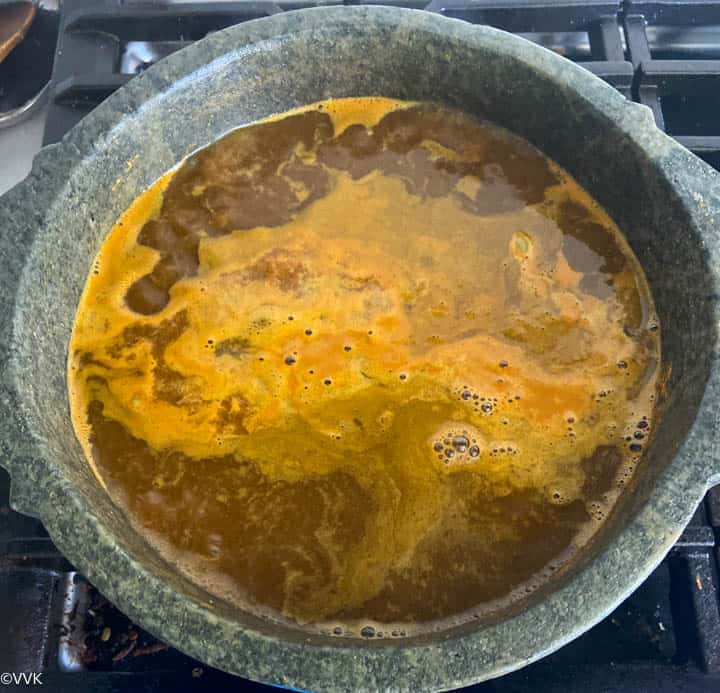
- Mix 1 tbsp of rice flour with ½ cup of water and make a slurry without any lumps. Add this slurry and the jaggery and add it to the kuzhambu. Let the kuzhambu simmer over low heat for about 7 to 10 minutes or until it thickens. Then turn off the heat.
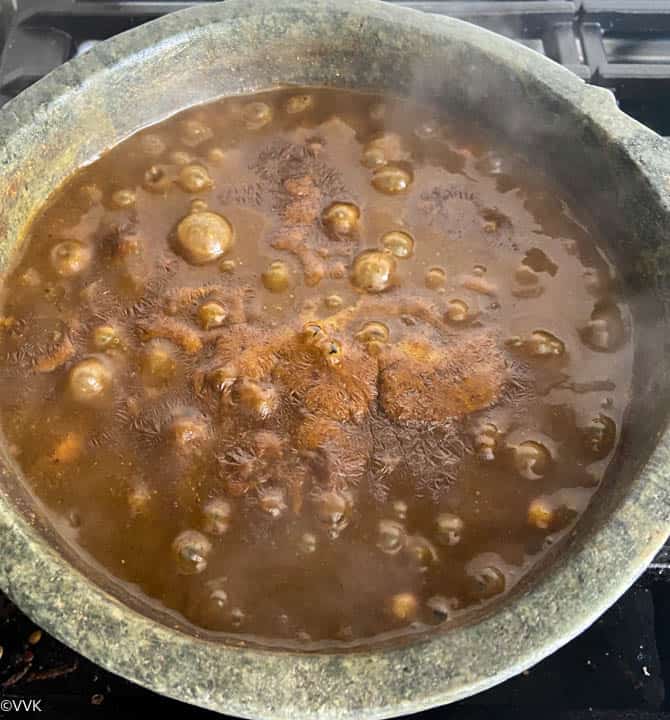
Prepare the tempering.
- In a separate tempering pan, heat the gingelly oil and add the mustard seeds and fenugreek seeds. When the mustard seeds splutter, turn off the heat and add the curry leaves. When the sizzle subsides a bit, add it to the kuzhambu. Serve hot with rice.

Recipe Notes
- You can also use canned garbanzo beans. You can use 1 to 1.5 cups of rinsed canned beans for this kuzhambu.
- As always, adjust the salt and spices as per your preference.
- Instead of rasam podi, you can also use sambar podi.
- I highly recommend gingelly oil or peanut oil for this kuzhambu, as it adds a nice flavor.
- It’s typically a kuzhambu recipe without any onion and garlic. But you can add five cloves of garlic and five shallots and saute them first before adding the tamarind water.
- Instead of chickpeas, use black chickpeas or field beans, or even kidney beans to make this gravy.
More South Indian Kuzhambu Varieties
P.S.: If you try this kondakadalai kuzhambu, please don’t forget to comment and rate this recipe. If you have any questions, please leave a comment, and I will get to it A.S.A.P. Make sure to follow me on my Pinterest for more healthy and delicious ideas! Follow me on Instagram or join my Facebook Group for more gardening and recipe updates! You can also sign-up for my newsletter for weekly updates.
📖 Recipe
Kondakadalai kuzhambu | South Indian Chickpeas Gravy
Equipment
- Saucepan or kadai or soapstone vessel
Ingredients
Measurement Details: 1 cup=240ml; 1 tbsp=15ml; 1tsp=5ml;
- ½ cup chickpeas soaked overnight
- 1.5 cups water to cook the beans
To roast and grind
- ½ tsp gingelly oil
- ¼ tsp mustard seeds optional
- 2 tsp toor dal
- 2 tsp urad dal
- 2 tsp black pepper
- ¼ tsp fenugreek seeds
- ¼ tsp asafoetida
- 3 dried red chilis
- 30 to 40 curry leaves a handful or 3 to 4 strands
- 1 cup water
Other ingredients
- 1 tsp rasam podi
- 2 tsp tamarind paste
- ½ tsp turmeric powder
- 2 tsp salt or to taste
- 1 tbsp jaggery
- 1 tbsp rice flour
- 1.5 to 2 cups water
To Temper
- ¼ tsp mustard seeds
- ¼ tsp fenugreek seeds
- 5 to 6 curry leaves
Instructions
Soak and cook the chickpeas.
- Rinse and soak the chickpeas overnight or atleast for 6 hours. Then drain the water and add 1.5 cups of freshwater, and pressure cook for three whistles. If using Instant Pot, pressure cook the beans for 18 to 20 minutes. Drain the water and set it aside.
Prepare the spice powder.
- In a small pan or kadai, heat gingelly oil, and when it is hot, add the mustard seeds, toor dal, urad dal, black pepper, fenugreek seeds, asafoetida, and dried red chilies. Roast until the toor dal turns light brown. Now add the curry leaves and turn off the heat. The curry leaves will crisp up in the residual heat.
- Let it cool and grind it into a smooth paste by adding ½ cup of water.
Prepare the kuzhambu
- Add the rasam podi, tamarind paste, turmeric powder, and salt in a saucepan or kadai in which you are going to make the kuzhambu. I used my soapstone vessel for making this, so I added the spices in that.
- Now add 1 cup of water and mix them. And bring this mixture to a boil.
- Once the rasam podi and tamarind paste’s raw smell is gone, add the chickpeas and cook for two minutes.
- Now add the ground paste to the kuzhambu and rinse the mixer jar with ½ cup of water and add that. If needed, add half more cups of water. Simmer the gravy for about 7 to 10 minutes.
- Mix 1 tbsp of rice flour with ½ cup of water and make a slurry without any lumps. Add this slurry and the jaggery and add it to the kuzhambu. Let the kuzhambu simmer over low heat for about 7 to 10 minutes or until it thickens. Then turn off the heat.
Prepare the tempering.
- In a separate tempering pan, heat the gingelly oil and add the mustard seeds and fenugreek seeds. When the mustard seeds splutter, turn off the heat and add the curry leaves. When the sizzle subsides a bit, add it to the kuzhambu. Serve hot with rice.
Notes
- You can also use canned garbanzo beans. You can use 1 to 1.5 cups of rinsed canned beans for this kuzhambu.
- As always, adjust the salt and spices as per your preference.
- Instead of rasam podi, you can also use sambar podi.
- I highly recommend gingelly oil or peanut oil for this kuzhambu, as it adds a nice flavor.
- It’s typically a kuzhambu recipe without any onion and garlic. But you can add five cloves of garlic and five shallots and saute them first before adding the tamarind water.
- Instead of chickpeas, use black chickpeas or field beans, or even kidney beans to make this gravy.
Nutrition
I am not a nutritionist. The nutritional information is provided as a courtesy and is an estimate only. It varies depending upon the product types or brands.


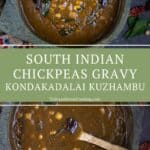

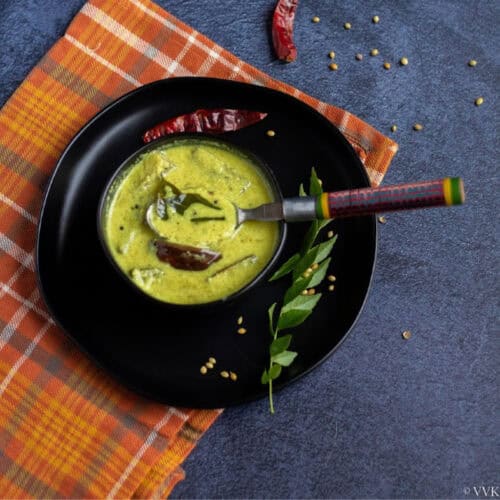
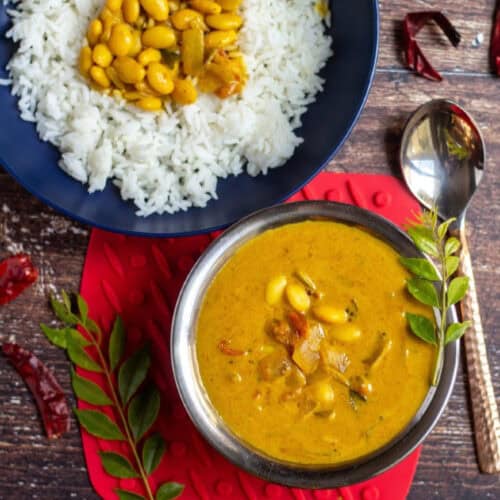
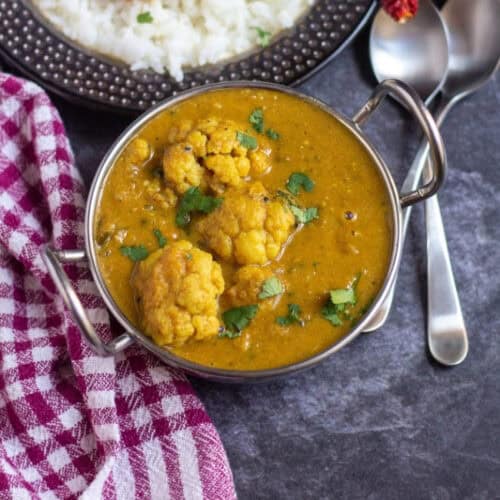
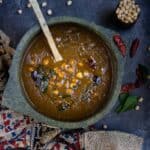
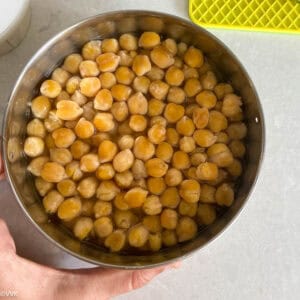
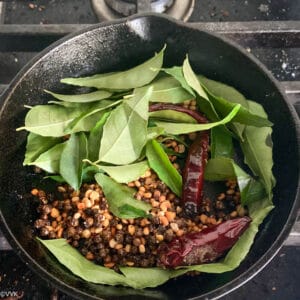
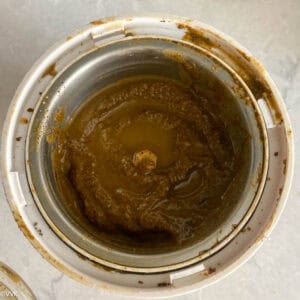
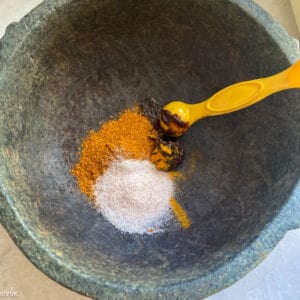
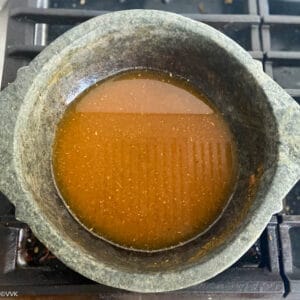
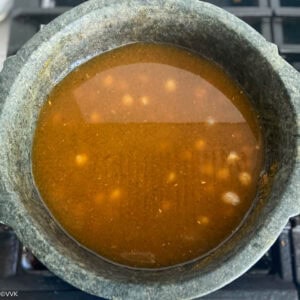
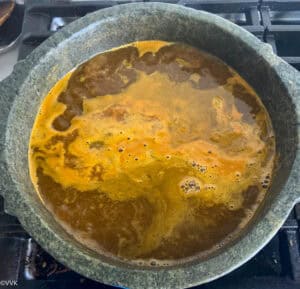
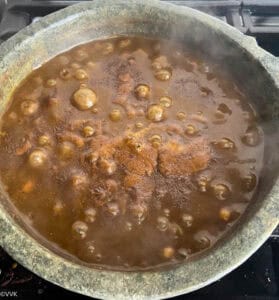
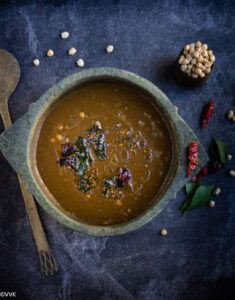

So tempting..our southIndian cuisine is one of the best in the world in my opinion..loved this recipe..
Thanks. :-)